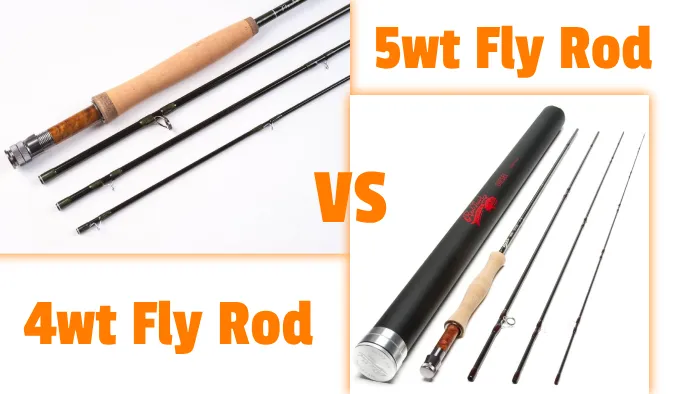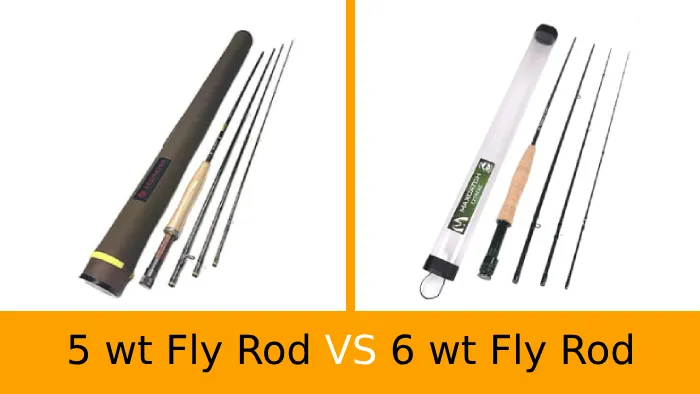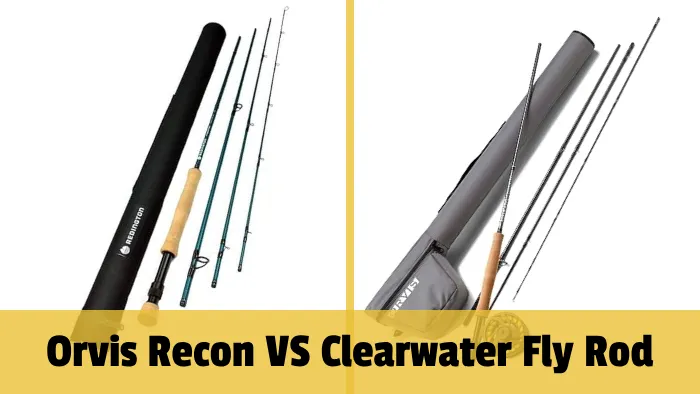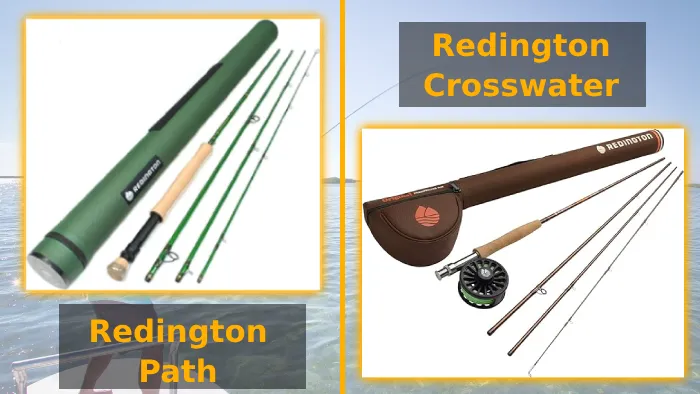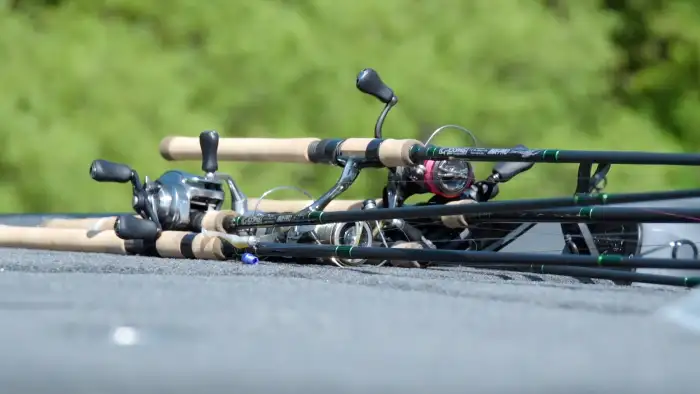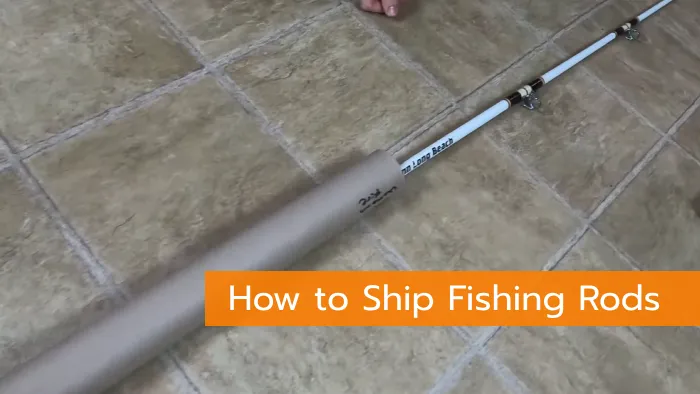Differences Between 4wt vs 5wt Fly Rod: 10 Fishing Impacts
When venturing into fly fishing, choosing the right fly rod weight can significantly impact your angling experience. Among the key considerations are the 4wt and 5wt fly fishing rods, each offering a unique set of attributes and applications.
The 4wt, with its slower action, excels in precise, delicate presentations, while the 5wt strikes a balance between casting distance and accuracy. Also noteworthy is the 5wt’s greater backbone, capable of efficiently managing larger and heavier fly lines.
In this blog post, we’ll break down the differences between 4wt and 5wt fly rods. So, let’s jump into the fascinating world of fly fishing and explore the distinctions between these two popular rod weights.
Differences Between 4wt and 5wt Fly Fishing Rod
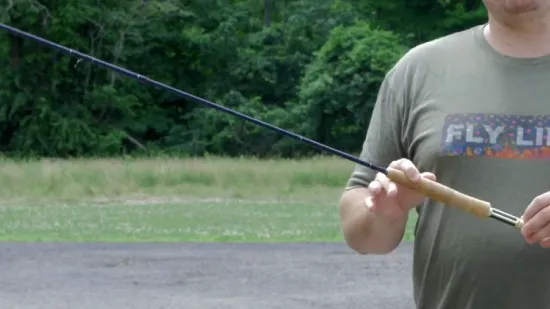
When considering the differences between a 4wt and 5wt fly fishing rod, there are several key points to consider. Here are a few of the most important distinctions between these two-rod weights:
- Casting performance
- Target fish size
- Fishing conditions
- Versatility
- Fly size and weight
- Sensitivity
- Resistance control
- Windy conditions
- Delicate presentation
- All around use
Let’s take a closer look at these differences for further comparison.
No 01. Casting Performance
To improve your casting performance, you’ll find that a 5wt fly rod offers more distance and accuracy compared to a 4wt rod. The medium-fast action of a 5wt rod allows for faster line speed and greater power, resulting in longer casts.
With a 5wt rod, you can reach distant feeding areas that were previously out of your range. Additionally, the increased power of the 5wt rod enables you to handle windy conditions better, allowing for more accurate casts even in challenging weather.
On the other hand, the 4wt rod is designed for precise and delicate presentations in tight spots, making it better suited for small streams and creeks. Also, its softer action is more forgiving when casting in tight spaces and allows for an easy release of the line.
No 02. Target Fish Size
For targeting larger fish, you’ll find that the 5wt rod is better suited due to its increased power and ability to handle more challenging conditions. You need a rod to deliver the necessary strength and control when going after bigger fish species like bass.
The 5wt fly rod provides just that. With its heavier line weight, it can handle larger fish’s additional weight and resistance. This means you’ll have more control over your casts and be better equipped to handle the fight when you hook a big one.
Conversely, the 4wt rod is best suited for targeting small to medium-sized fish, such as trout and panfish. Its lighter line weight is well-matched to these species. It won’t offer as much power or control as the 5wt when going after larger species, but it’s an ideal setup for smaller ones.
No 03. Fishing Conditions
The 4wt fly rod shines in calm conditions and slow-moving water, where delicate presentations are essential for success. Its light line weight allows you to make subtle casts that won’t spook the fish or interfere with the presentation.
Meanwhile, the 5wt rod is adaptable to a wider range of fishing conditions, making it a good choice for anglers. Whether you’re fly fishing in Colorado on larger rivers or facing slightly windy conditions, this rod can handle it all. Fishing in calm to slightly choppy waters is possible with the 5wt rod.
No 04. Versatility
With its ability to handle various fishing conditions and target different fish species, the 5wt rod is a versatile choice for anglers. Whether you’re casting on a calm lake, battling fast-flowing rivers, or exploring saltwater flats, the 5wt rod can handle it all.
On the other hand, the 4wt rod has a more limited scope and is primarily designed for specific scenarios, such as small stream trout fishing. So, when choosing, it would be wise to consider the type of fishing you plan to do.
No 05. Fly Size and Weight
When choosing a rod, consider the size and weight of the flies you’ll be using. The 4wt rod is designed for smaller flies, typically ranging from size 16 to 22. This rod is ideal for delicate dry fly presentations, where finesse and precision are key.
The lighter weight of the 4wt allows for delicate presentations without spooking the fish.
On the other hand, the 5wt rod can handle slightly larger flies, usually ranging from size 12 to 18. This extra strength and power make it more versatile, allowing you to fish with a wider range of fly patterns and sizes.
No 06. Sensitivity
Choosing a 4wt fly rod offers greater sensitivity, allowing you to detect subtle strikes more easily. The slower action of the 4wt rod enables you to feel even the slightest nibbles from fish, providing a heightened level of awareness and responsiveness.
This increased sensitivity is crucial when fishing when fish are more cautious or when using smaller flies. The 4wt rod lets you precisely detect these subtle strikes, allowing you to set the hook and land your catch successfully.
However, the 5wt rod may sacrifice some sensitivity for versatility, as it’s designed to handle a wider range of fishing scenarios. Because of this, it may be a less sensitive option than the 4wt when fishing with smaller flies or in conditions where fish are more cautious.
No 07. Resistance Control
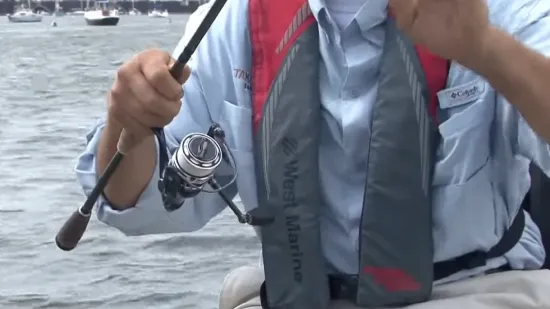
The 4wt rod’s controlled resistance helps prevent snapping the leader when fighting smaller fish. With its lighter weight and more delicate action, the 4wt rod is designed to provide just the right amount of resistance during the fight.
This controlled resistance allows you to apply pressure without overpowering the fish, reducing the risk of the leader breaking.
However, when targeting larger fish, a 5wt rod offers more power to handle the increased force and weight. It provides a sturdier backbone and greater lifting capability, giving you the confidence to battle bigger fish without compromising your chances of landing them successfully.
No 08. Windy Conditions
In gusty weather, the 4wt rod may need help due to its lighter line weight being less effective. When faced with windy conditions, the 4wt rod lacks the power and stability necessary to overcome the resistance caused by the wind. The lighter line weight cannot cut through the strong gusts, resulting in poor casting performance.
Alternatively, the 5wt rod, with its medium-fast action, is better suited for fishing in moderate wind. The slightly heavier line weight provides more control and allows for smoother and more accurate casts.
The increased power of the 5wt rod enables it to punch through the wind, making it a more reliable choice when faced with challenging weather conditions.
No 09. Delicate Presentation
You’ll want to focus on finesse and precision with your rod selection to achieve a delicate presentation.
Regarding the differences between a 4wt and a 5wt fly fishing rod, the 4wt is the clear winner regarding delicacy. Its lighter weight allows for a more subtle and precise cast, making it ideal for those small streams and creeks where finesse is crucial.
The 4wt rod excels at presenting flies gently on the water’s surface, ensuring a natural drift that won’t spook wary fish.
Nevertheless, the 5wt rod sacrifices some delicacy for versatility. It offers slightly more power and distance, making it a better choice when you need to cover greater distances or deal with slightly larger fish.
However, if delicate presentations are your priority, the 4wt rod is the way to go.
No 10. All Around Use
While the 4wt rod is more specialized for delicate presentations, the 5wt rod is designed to handle a wide range of scenarios and fish sizes. It is a versatile option for anglers who want a rod that can adapt to different fishing conditions.
With the 5wt rod, you can seamlessly transition between delicate presentations and targeting larger fish effectively. The all-in-one solution makes it the perfect choice for users who are looking for a comprehensive solution.
On the other hand, the 4wt rod is better suited for anglers who prioritize finesse and precision over versatility. It excels in specific conditions and is perfect for situations that require a lighter touch.
Comparison Table Between 4wt and 5wt Fly Fishing Rod
| Aspect | 4wt Fly Rod | 5wt Fly Rod |
| Casting Distance | Delicate, shorter casts | Balanced, longer casts with accuracy |
| Versatility | Only available in calm conditions and small streams | Adaptable to various fishing scenarios |
| Fish Species Targeted | Smaller species like trout and panfish | Larger species like bass |
| Personal Preference | Favors delicacy and calm conditions | Prefers versatility and larger fish |
| Wind Resistance | Struggles in strong winds | Better resistance in windy conditions |
| Presentation Delicacy | Excellent for precise, delicate presentations | Capable of finesse but not as delicate |
| Fighting Larger Fish | Less suitable for larger, stronger fish | Better equipped for battling big fish |
| Fly Size and Weight | Ideal for smaller flies (size 16 to 22) | Handles slightly larger flies (size 12 to 18) |
| Range of Water Conditions | Best in small streams, calm water | Adapts to larger rivers and moderate currents |
| All-Around Use | Specialized for finesse and precision | Versatile for diverse scenarios and fish sizes |
How far can a 4wt fly rod be cast?

With 30 to 40 feet of line past the tip, you can feel a 4wt fly rod working. These rods are designed to provide a sensitive and responsive feel, allowing you to detect even the subtlest of strikes easily.
When it comes to casting, a 4wt rod can shoot line effortlessly up to 50 to 60 feet and, in some cases, even further. However, picking up 45 feet of line off the water requires a bit more effort and flexing of the rod.
How far can you cast a 5 weight fly rod?
A 5wt fly rod can cast distances ranging from 10 feet to 60 feet, making it versatile for various fishing environments. With this rod, you can cast short and long distances, allowing you to fish in various scenarios.
Whether you’re targeting small streams, big rivers, or lakes, the 5wt rod has got you covered. The optimal range for catching fish with this rod is typically between 15′ and 40′, but you can certainly cast beyond that if needed. This flexibility allows you to adapt to different fishing conditions and target a variety of fish species.
4wt or 5wt Fly Rod: Select One for Your Fishing Needs
Now you know the detailed answer to the question, “4wt vs. 5wt fly rod.” Regarding choosing between a 4wt and 5wt fly fishing rod, it all depends on your fishing needs.
The 4wt rod is lighter and more delicate, perfect for small streams and delicate presentations. On the other hand, the 5wt rod offers more power and versatility, allowing you to cast further and handle larger fish.Remember the old saying, ‘Choose the rod that matches the fish you’re after.’ So, consider the size of the fish and the type of water you’ll be fishing in to make the right choice.

